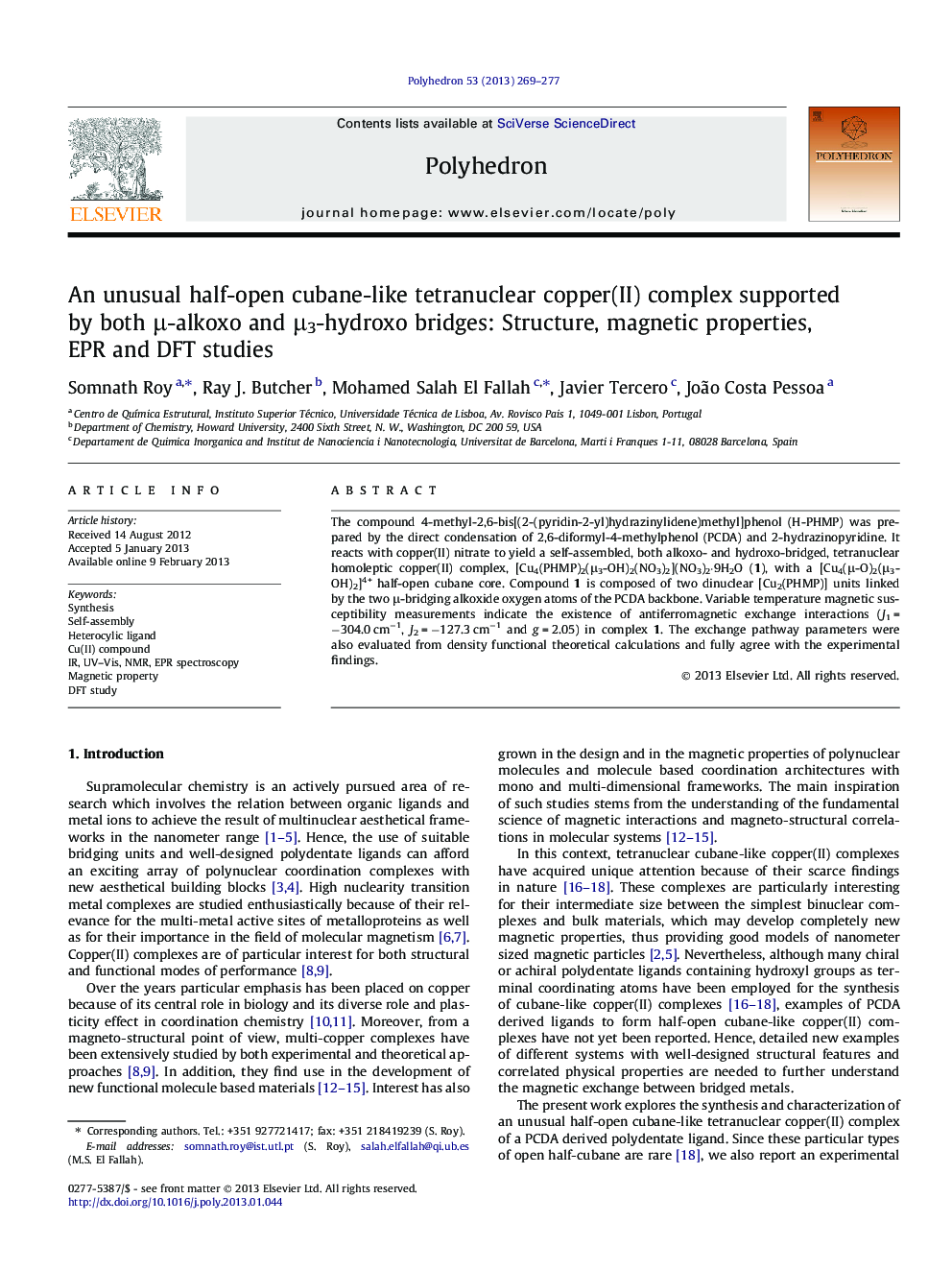| Article ID | Journal | Published Year | Pages | File Type |
|---|---|---|---|---|
| 1335824 | Polyhedron | 2013 | 9 Pages |
The compound 4-methyl-2,6-bis[(2-(pyridin-2-yl)hydrazinylidene)methyl]phenol (H-PHMP) was prepared by the direct condensation of 2,6-diformyl-4-methylphenol (PCDA) and 2-hydrazinopyridine. It reacts with copper(II) nitrate to yield a self-assembled, both alkoxo- and hydroxo-bridged, tetranuclear homoleptic copper(II) complex, [Cu4(PHMP)2(μ3-OH)2(NO3)2](NO3)2·9H2O (1), with a [Cu4(μ-O)2(μ3-OH)2]4+ half-open cubane core. Compound 1 is composed of two dinuclear [Cu2(PHMP)] units linked by the two μ-bridging alkoxide oxygen atoms of the PCDA backbone. Variable temperature magnetic susceptibility measurements indicate the existence of antiferromagnetic exchange interactions (J1 = −304.0 cm−1, J2 = −127.3 cm−1 and g = 2.05) in complex 1. The exchange pathway parameters were also evaluated from density functional theoretical calculations and fully agree with the experimental findings.
Graphical abstractThe polydentate compound H-PHMP reacts with Cu2+ to yield a tetranuclear Cu-complex with a [Cu4(μ-O)2(μ3-OH)2] half-open cubane core. A variable temperature magnetic study indicates the existence of antiferromagnetic interactions (J1 = −304.0 cm−1 and J2 = −127.3 cm−1), this being corroborated by DFT calculations.Figure optionsDownload full-size imageDownload as PowerPoint slide
